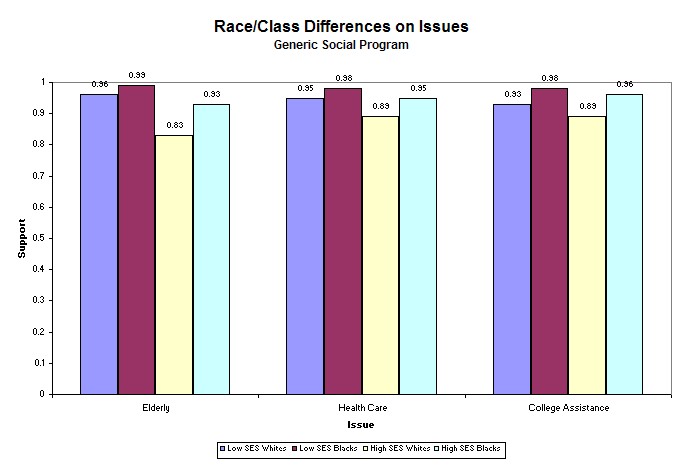
This graph shows a slight tendency for class to serve as a cross-cutting cleavage on these issues. The lower SES groups (both white and black) tend to show slightly greater support for social programs to benefit the elderly, health care assistance, and assistance to college students, than their higher SES counterparts. However, blacks (regardless of race) tend to show slightly greater support than whites.

However, this graph clearly shows that there is indeed a pattern of class serving as a cross-cutting cleavage with race. Note that the level of support among the high SES groups is uniformly lower within racial groups (i.e. high SES black have less support than low SES blacks, and high SES whites have less support than low SES whites). Even so, within classes blacks do tend to show more support for these programs than whites, even though there may still be disagreement within the races across class lines. When the issue is about policy that has a more class-based component (e.g. making sure that everyone who is willing/able to work has a job, providing for a minimum standard of living, working to equalize income differences in society, and providing adequate housing to those who need it) the potential for class to cross-cut with race is greater.

However, it is a very different picture when the issue is more directly related to race. On matters involving race-targeted policies (policies like affirmative action and anti-discrimination laws) all evidence of class as a cross-cutting cleavage disappears.